2025 GPS Air Indoor Air Quality Perception Report
The global COVID-19 pandemic shined a bright light on the importance of indoor air quality (IAQ) and the various available ways to improve it. While there are several strategies that can be leveraged to improve IAQ, no one solution is completely effective on its own. There are no silver bullets. Rather, a multilayered approach has demonstrated greater efficacy over individual solutions such as ventilation and filtration.
At the foundation of a well-designed system are fibrous air filters that are installed in a building’s heating, ventilation and air-conditioning (HVAC) system. But filtration has an Achilles heel. Filters perform well capturing large, coarse particles. However, filters — regardless of their MERV rating — have a pronounced weak spot in capturing fine and ultrafine particles that are less than 1 micron in diameter (< 1 µm). This weak spot is known by some as the MERV Curve. The particles that fall into this gap include many viruses and bacteria as well as particulate matter found in wildfire smoke.
This article delves into this topic, including how deploying ionization on top of filtration can help address the gap and flatten the MERV Curve.
FOUR PRIMARY MECHANISMS FILTERS USE TO CAPTURE AIRBORNE PARTICLES
Fibrous air filters are composed of numerous randomly oriented media fibers that form a dense mat of material that captures particles. The combination of a filter’s thickness, fiber diameter and mat density helps determine its effectiveness.
There are four primary mechanisms filters use to capture airborne particles.
1. STRAINING occurs when the opening between the media members is smaller than the diameter of the particle the filter is designed to capture. This principle, which spans across most filter designs, is related to the size of the particle, media spacing and media density.
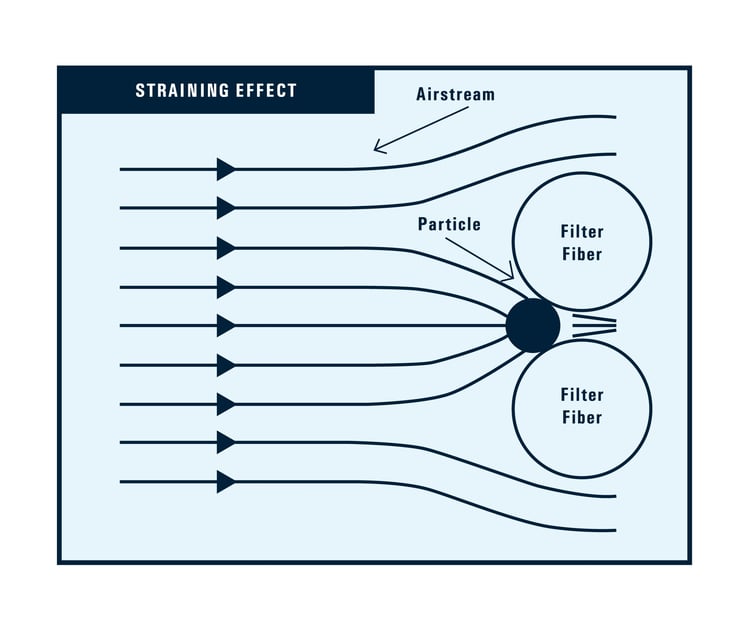
2. INTERCEPTION occurs when a particle, typically one that is quite small, comes into direct contact with a filter’s fiber and sticks. Because submicroscopic particles lack mass, they essentially float on the airflow and into the filter’s fiber membrane.
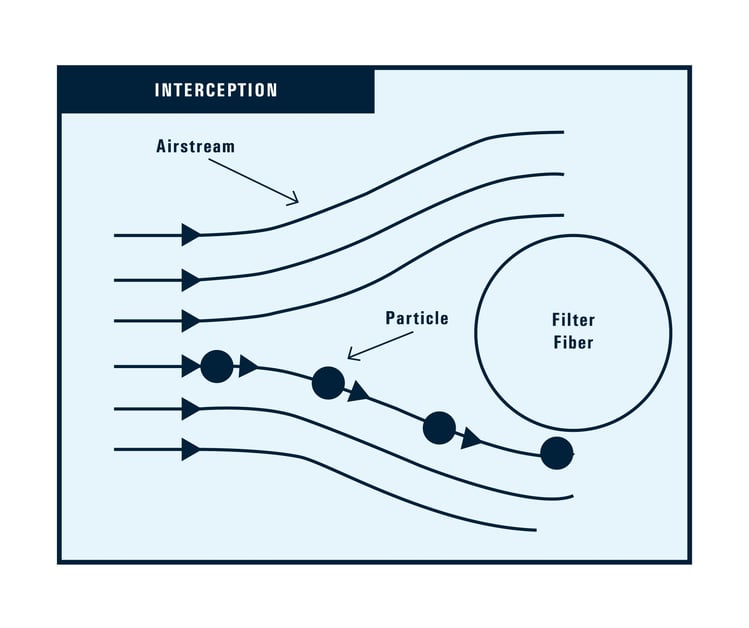
3. INERTIAL IMPACTION occurs when larger particles are carried into the filter by airflow separate from the airstream and impact the filter media. These larger particles have greater mass, which enables them to break away from where the air is heading.
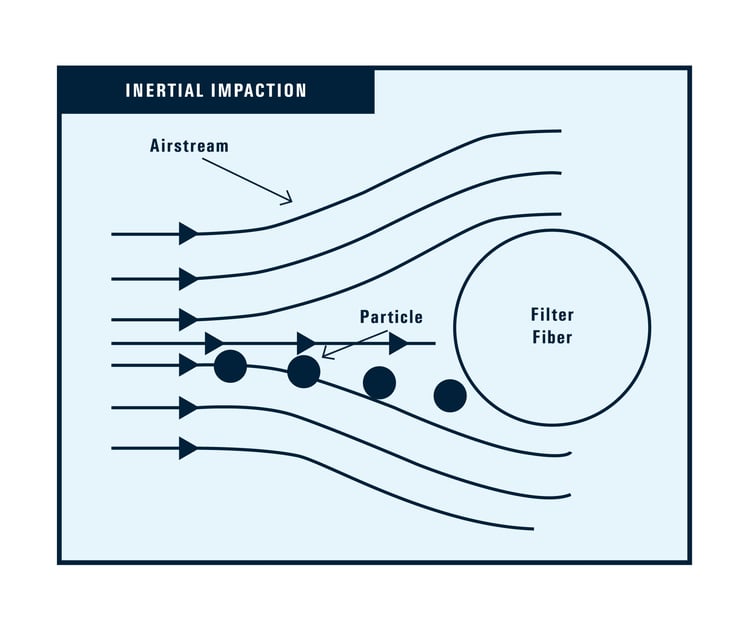
4. DIFFUSION occurs when microscopic particles are highly affected by forces in the airstream. Changes in local air velocity, air pressure and turbulence due to the movement of other particles, along with interaction with air molecules, cause the particle’s movement to become random and chaotic (known as Brownian motion). As a result, these particles don’t follow the airstream. Instead, they pinball into other particles, and this erratic motion may cause them to collide with the filter media fibers.
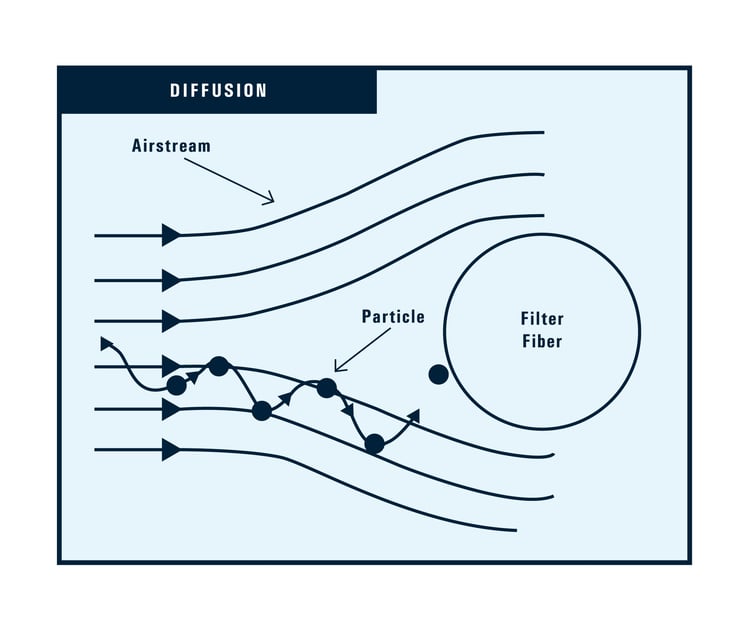
Many filters are also enhanced with an electrostatic charge in the manufacturing process, which helps the filter attract more fine and ultrafine particles. This feature is noted on the packaging with a small horseshoe and lightning bolts. These filters, however, can lose their charge due to factors such as high humidity conditions and particle loading.
MERV RATINGS
Air filters are rated on a scale derived by the American Society of Heating, Refrigerating and Air-Conditioning Engineers (ASHRAE) known as MERV, which stands for Minimum Efficiency Reporting Value. The higher the MERV rating, the more effective the filter is at capturing particles of varying sizes.
According to the National Air Filtration Association (NAFA), filters rated MERV 1–MERV 10 have no efficiency capturing and removing particles that are between 0.3 and 1.0 µm. That is why ASHRAE, during the pandemic, recommended that HVAC air filters rated MERV 13 or higher be used when possible.
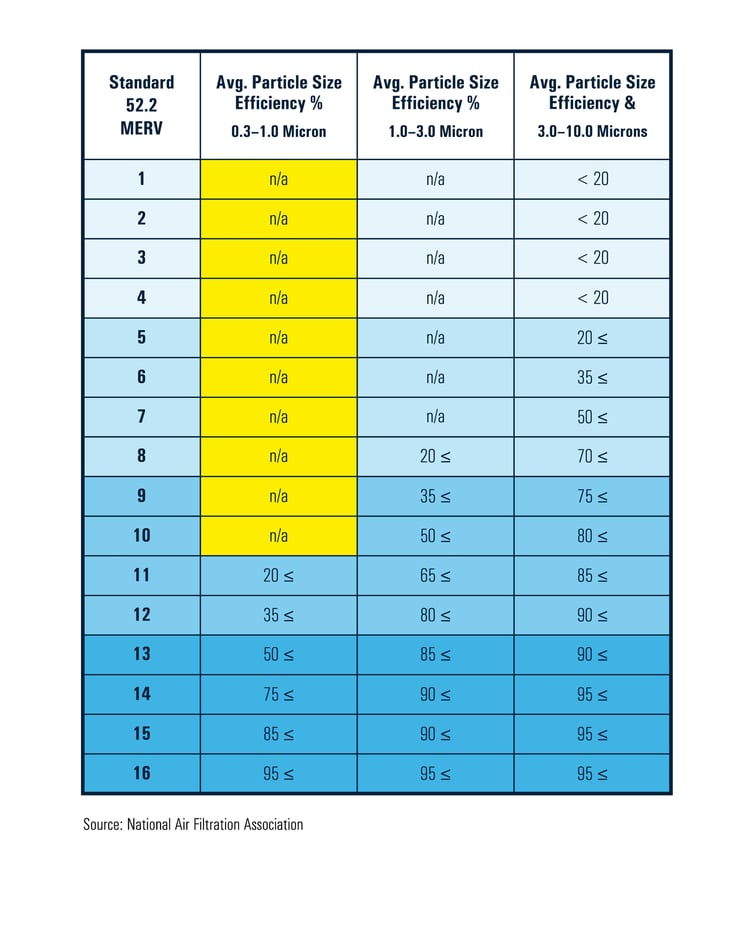
HEPA FILTERS
High efficiency particulate air (HEPA) filters perform even better than the highest-rated MERV filters. HEPA filters are a type of pleated mechanical air filter “that theoretically are capable of removing at least 99.97% of dust, pollen, mold, bacteria, and any airborne particles with a size of 0.3 microns,” according to the Environmental Protection Agency (EPA). This particle size (0.3 µm) is known as the most penetrating particle size (MPPS). But notably, not all HVAC systems, especially older ones, are able to accommodate and support HEPA filters.
WHY THE MERV CURVE MATTERS FOR INDOOR AIR QUALITY
Filters perform well capturing coarse particles that are larger than 3.0 µm. However, filters — regardless of MERV rating — have a pronounced weak spot when it comes to capturing particles between 0.1 and 1.0 µm.
-
According to ASHRAE, fewer than 1 particle in every 1,000 is larger than 1 µm. So, these microscopic and submicroscopic particles are ubiquitous with ultrafine particles commonly found at concentrations of between 60 and 120 million particles per cubic foot in both indoor and outdoor air.
-
According to the National Air Filtration Association, the particles filters struggle to capture are in the zone that includes most viruses (individual viruses or virions typically range between .02 and .40 µm) and many bacteria (most individual bacteria range between 0.4 and 5.0 µm). Also of note, and concern, is smoke, where particles often fall between 0.1 and 0.3 µm.
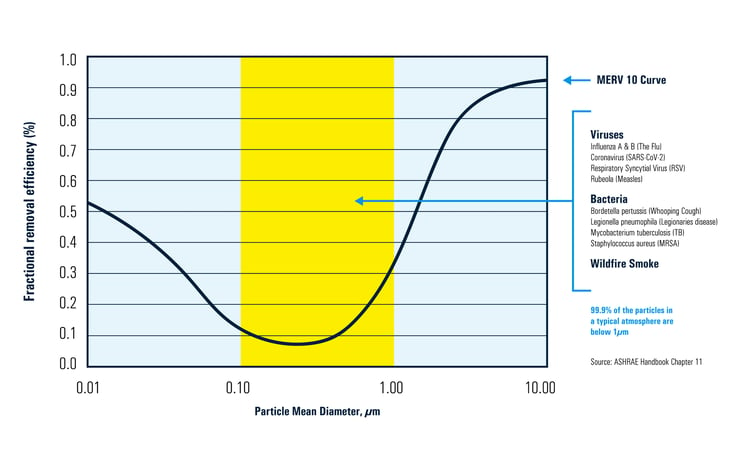
-
These particles, which are all around us, also stay suspended in indoor environments for hours and days. Viruses and tobacco smoke may stay suspended in the air for 13 days or more. Bacteria (and dander) can linger in the air for nearly eight hours before settling.
-
The size of particles is directly linked to their potential for causing health problems. Microscopic and submicroscopic particles can get deep into lungs, and some may even get into the bloodstream, affecting a person’s lungs and heart while elevating their susceptibility to respiratory diseases.
THE POWER OF IONIZATION
One approach to helping air filters do a better job capturing particles of concern (including MPPS) found in the MERV Curve is to make them larger.
A safe, effective and proven way to accomplish this is through needlepoint bipolar ionization (NPBI™). This patented technology creates and releases ions into the airstream using a building’s existing HVAC system as the delivery method. When these ions disperse throughout a space, they seek out and form bonds with particles in the air through a well-established process called agglomeration. This process creates a snowball effect in which particles begin to cluster together. The larger a cluster of particles becomes, the easier it is for an HVAC system to filter it out of the air.
The benefits of ionization by including NBPI as part of a multilayered solution (ventilation and filtration) are many. Aerosolized particulate matter is removed faster. Indoor air spaces are cleaned more thoroughly. Cost savings can be significant.
Learn more about how NPBI works to help improve indoor air quality.




